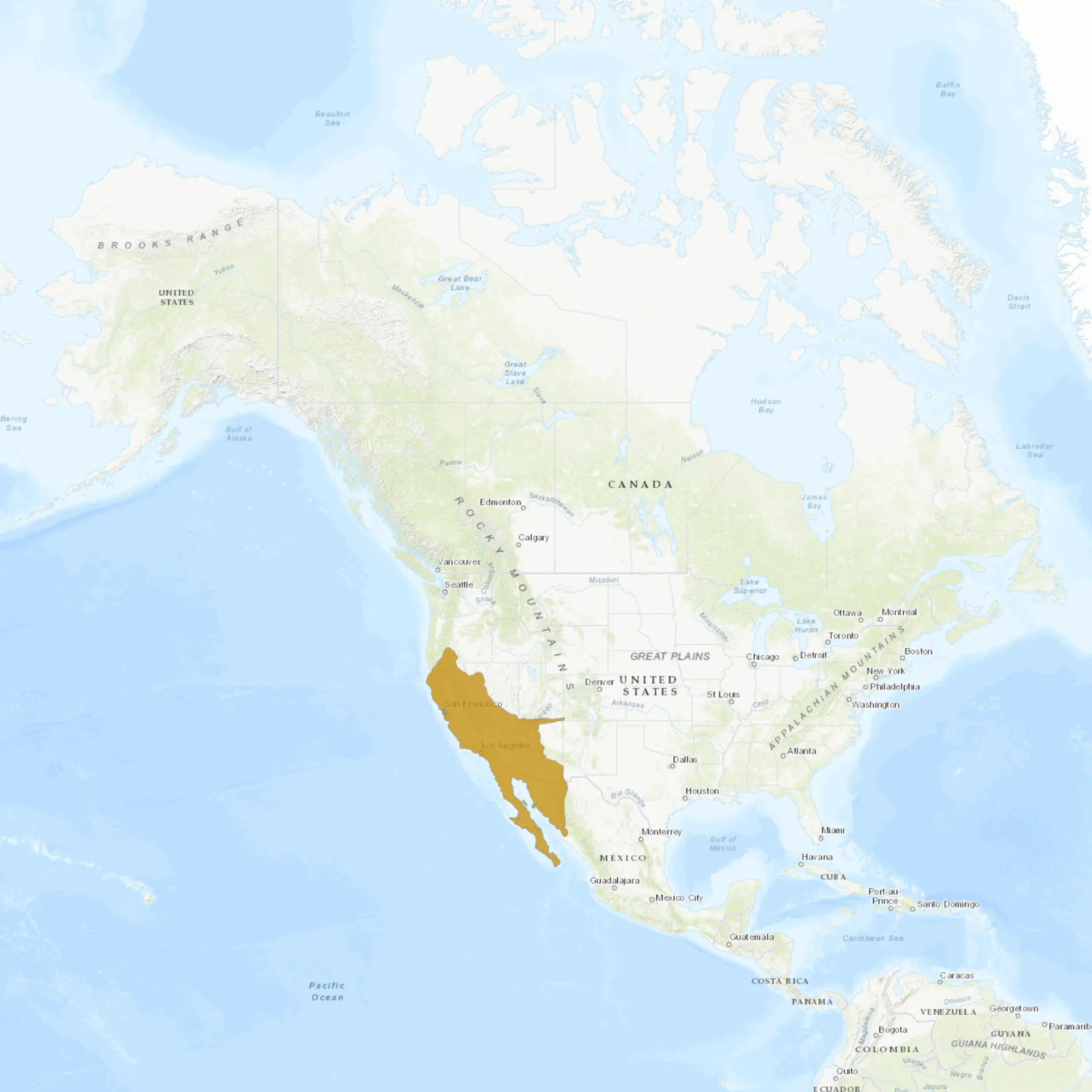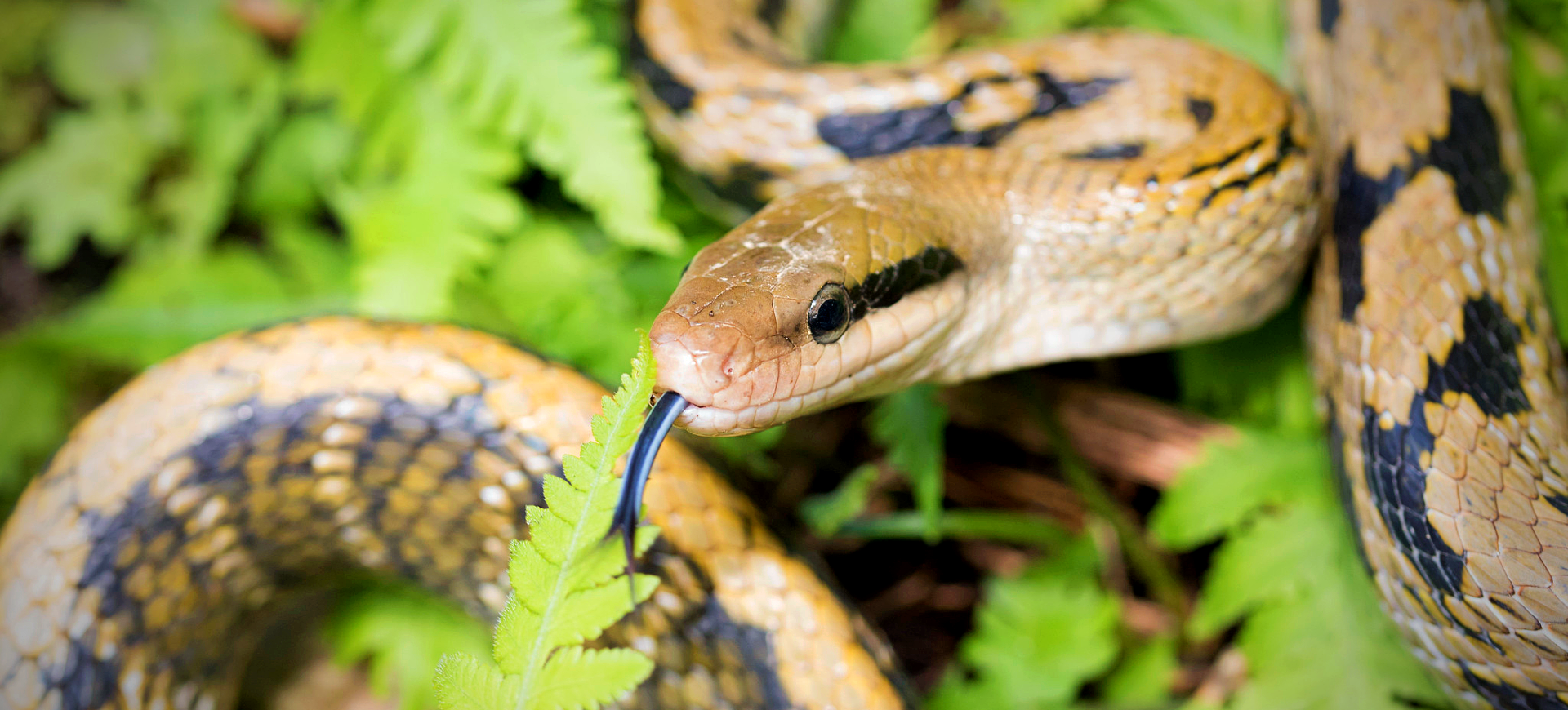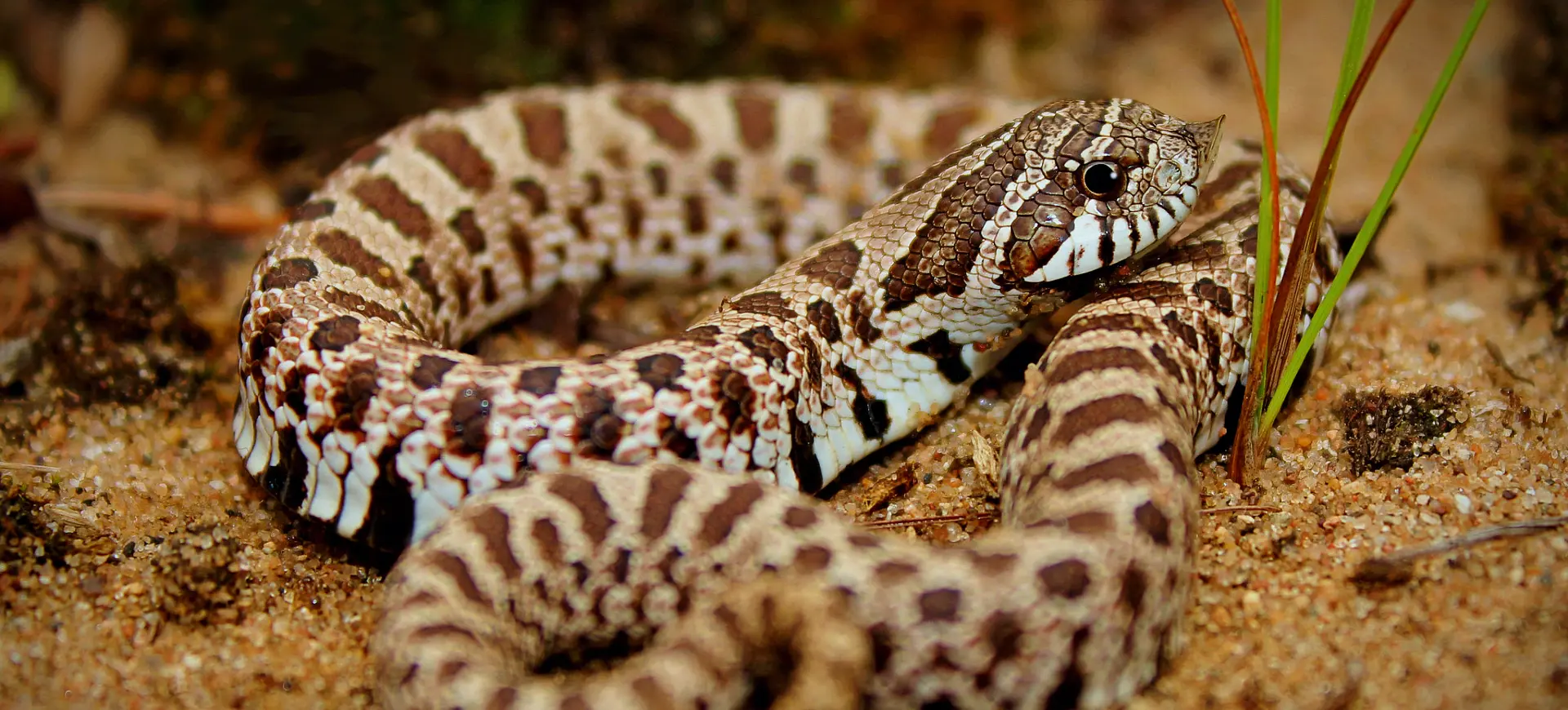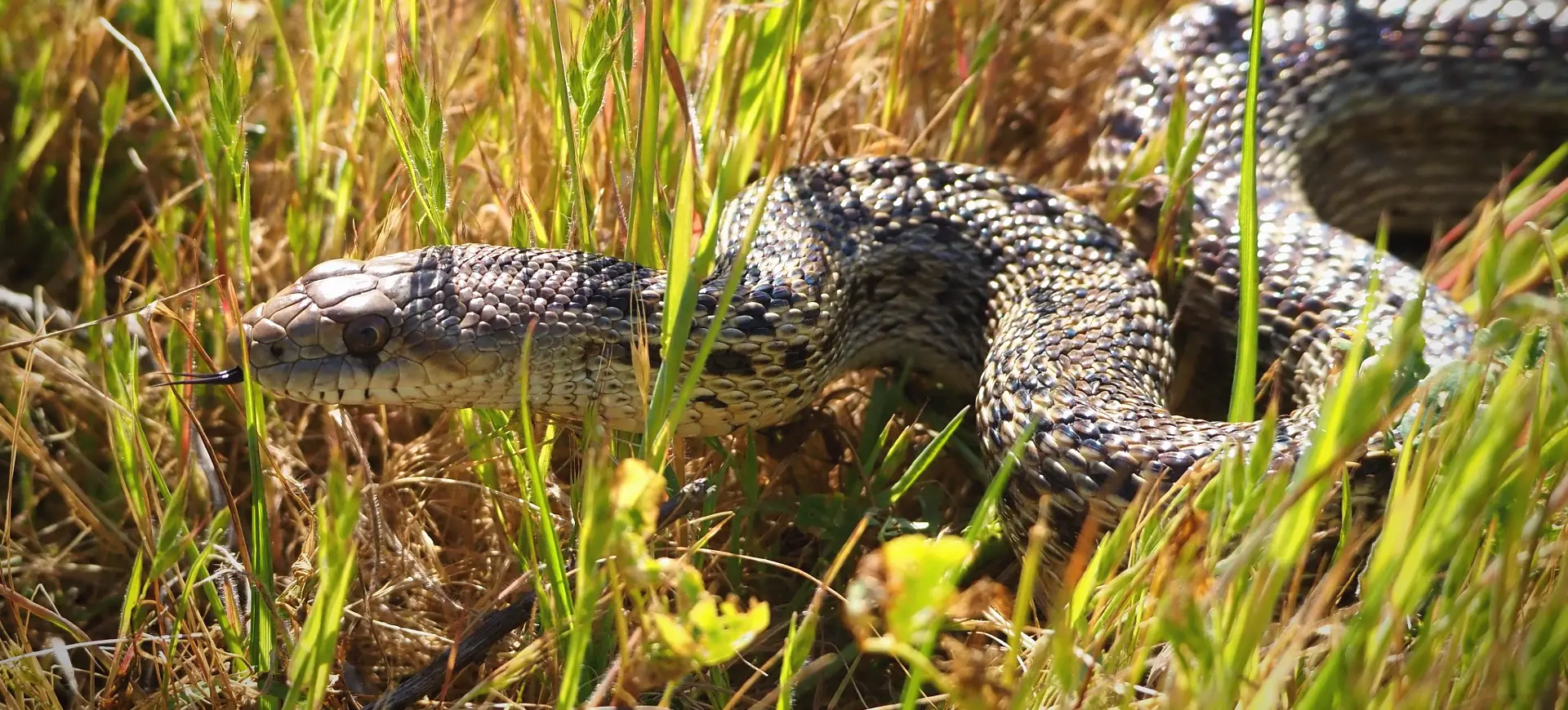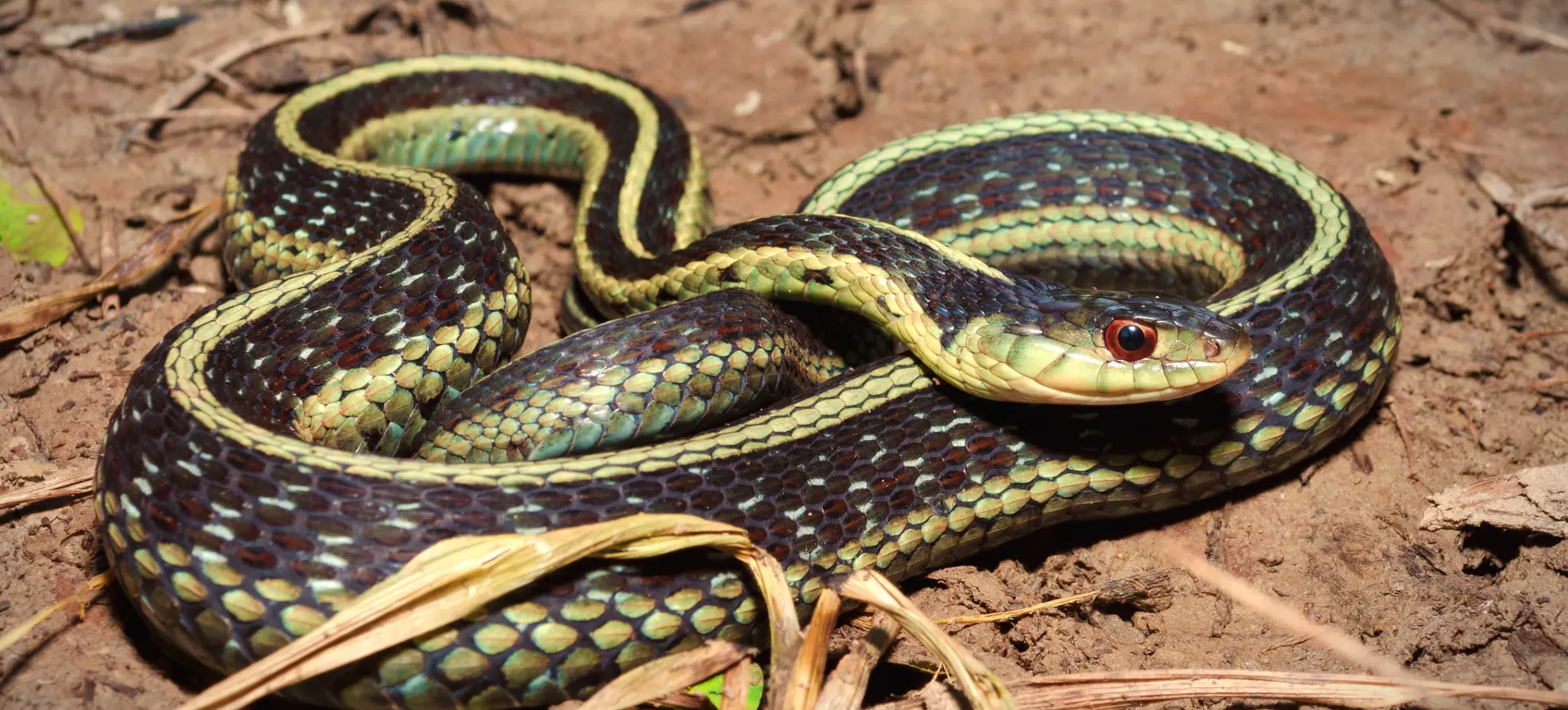Overview
The California kingsnake (Lampropeltis californiae) is a non-venomous colubrid snake native to the western United States and northern Mexico. It is known for its striking black or brown bands alternating with white or cream-colored bands, though some populations exhibit striped or patternless morphs. Highly adaptable, this species thrives in a wide range of habitats, from deserts and grasslands to forests and suburban areas. Its name, “kingsnake,” refers to its habit of preying on other snakes, including venomous rattlesnakes, as it inaturally resists their venom.
California kingsnakes are powerful constrictors that subdue their prey by coiling around them and tightening their grip until suffocation occurs. They have an opportunistic diet, feeding rodents, birds, amphibians, lizards, and other snakes. Unlike many snake species, they are known for their docile nature in captivity, making them one of the most popular pet snakes. In the wild, they are mostly active during the day in cooler months and become nocturnal in hot summer conditions.
When threatened, California kingsnakes display defensive behaviors such as coiling, rattling their tail against dry leaves, and releasing a foul-smelling musk. However, they rarely bite unless provoked, preferring to flee or use bluffing tactics to deter predators. Their primary predators include birds of prey, coyotes, larger snakes, and some mammals. Despite habitat destruction in certain areas, their adaptability and wide distribution have helped maintain stable population numbers.
Taxonomy
Kingdom
Phylum
Class
Order
Family
Genus
Species
Type
Current distribution:
The California kingsnake is native to the western United States and northern Mexico, with populations extending from Oregon and Nevada to Baja California and Sonora. It is most commonly found throughout California, thriving in various habitats, including deserts, woodlands, and agricultural areas. This species has also been introduced to several locations outside its natural range, including the Canary Islands, where it has become invasive.
Although it faces habitat loss due to urban expansion, agriculture, and road development, its adaptability has allowed it to persist in many areas. It is frequently encountered in suburban environments, where it helps control rodent populations. In some regions, illegal collection for the pet trade poses a minor threat, but overall, the species remains abundant. Conservation efforts focus on protecting natural habitats and preventing the spread of invasive populations.
Physical Description:
The California kingsnake is a medium-sized snake with a slender, elongated body covered in smooth, glossy scales. Its most common pattern alternates dark brown or black bands with white or cream-colored bands, creating a distinctive contrast. Some populations display striped, speckled, or patternless morphs, particularly in coastal or island regions. The underside is usually lighter, often white or yellowish with dark speckling.
Adults typically measure between 3 and 4 feet (91–122 cm) in length, though some individuals exceed 5 feet (152 cm). Their head is slightly wider than their neck, with small, round eyes and a short, blunt snout. Like other colubrids, they lack venom glands and instead rely on constriction to subdue their prey. Juveniles resemble adults but may have more vivid coloration that fades slightly with age.

Lifespan: Wild: ~10 Years || Captivity: ~20 Years

Weight: Male: 2.5–4.5 oz (70–130 g) || Female: 2.1–3.9 oz (60–110 g)

Length: Male: 30–48 in (76–122 cm) || Female: 28–42 in (71–107 cm)

Top Speed: 6 mph (9.7 km/h)
Characteristic:
Native Habitat:
California kingsnakes thrive in various habitats, including deserts, grasslands, forests, chaparral, and wetlands. They are commonly found in areas with abundant ground cover, such as fallen logs, rock piles, and dense vegetation, where they seek shelter from predators and extreme temperatures. In desert environments, they take refuge in burrows or under rocks to avoid the day’s intense heat. They are also well-adapted to suburban areas, where they often inhabit gardens, farms, and abandoned structures.
This species is highly tolerant of environmental conditions from coastal regions to mountainous terrains. It is frequently found near water sources such as rivers, streams, and ponds, where prey animals are abundant. Although they prefer warm climates, they brumate (a reptilian form of hibernation) during the colder months in northern parts of their range. Their adaptability allows them to coexist with human activity better than other snake species.
Biogeographical Realms:
Continents:
Countries:
Diet:
Diet & Feeding Habits:
California kingsnakes are opportunistic carnivores that consume various prey, including rodents, birds, lizards, amphibians, and other snakes. Their ability to prey on venomous rattlesnakes is due to their natural resistance to rattlesnake venom. They use constriction to kill their prey, wrapping their bodies around it and tightening until the prey suffocates. This method allows them to effectively subdue larger animals, including other snakes of similar size.
They are skilled hunters that rely on their keen sense of smell and heat-sensitive vision to detect prey. They primarily hunt on the ground but are also capable climbers, occasionally raiding bird nests for eggs and hatchlings. In captivity, they readily accept pre-killed mice and rats, making them one of the easiest snakes to maintain in an artificial environment. While they prefer live prey in the wild, they have been observed scavenging when opportunities arise.
Mating Behavior:
Mating Description:
California kingsnakes follow a polygynous mating system, with males competing to access multiple females during the breeding season. Courtship involves the male engaging in chin-rubbing and body-coiling behaviors to stimulate the female. Mating typically occurs in the spring, following brumation, and females lay eggs in concealed locations such as under logs, in burrows, or within leaf litter. A single clutch consists of 5–20 eggs, which hatch after an incubation period of around 50–70 days.
After laying her eggs, the female provides no parental care, leaving the hatchlings to fend for themselves upon emergence. Young kingsnakes are fully independent and begin hunting shortly after hatching. Hatchlings display the same constricting behavior as adults, preying on small reptiles and invertebrates. Sexual maturity is reached within 2–4 years, depending on environmental conditions and food availability.
Reproduction Season:
Birth Type:
Pregnancy Duration:
Female Name:
Male Name:
Baby Name:
Social Structure Description:
The California kingsnake is a solitary species, with individuals typically only coming together during breeding. They are highly territorial and will defend their space from other snakes, including their specific kind. When encountering another snake, they may engage in non-lethal combat, particularly between males competing for a mate. Outside of mating, they spend most of their time alone, hunting, basking, or hiding in burrows, rock crevices, or under logs.
Despite their solitary nature, California kingsnakes dominate other snake species, including venomous rattlesnakes, which they frequently prey upon. They rely on their strong constriction ability to overpower prey and defend themselves when necessary. Juveniles are independent from birth, receiving no parental care and relying on instinct to find food and shelter. While they do not form social groups, their presence in an ecosystem helps regulate populations of rodents and other small animals, contributing to overall ecological balance.
Groups:
Conservation Status:
Population Trend:
The California kingsnake maintains a stable and abundant population across its native range, benefiting from its adaptability to diverse habitats. It is commonly found in deserts, grasslands, forests, and suburban environments, demonstrating a high tolerance for human presence. Unlike many reptile species facing severe declines due to habitat loss, the California kingsnake has managed to persist in both natural and modified landscapes. Its ability to control rodent and snake populations has contributed to its ecological success in many regions.
While the species remains widespread, localized declines have been observed in areas where urban development and agriculture have significantly reduced suitable habitats. Road mortality is a common threat as these snakes frequently cross roads while searching for food or mates. Additionally, illegal collection for the pet trade poses a minor risk, though captive breeding programs have reduced the demand for wild-caught individuals. The species has become invasive in some introduced locations, such as the Canary Islands, negatively impacting native reptile populations.
Population Threats:
Habitat destruction due to urban expansion, agriculture, and land development is a primary threat to California kingsnake populations in certain regions. As natural landscapes are converted into residential and commercial areas, the availability of shelter and food sources declines, decreasing the local population. Fragmentation of habitats also increases the risk of road mortality, as vehicles frequently strike snakes while crossing roads. Pollution and pesticide use can reduce prey availability, indirectly affecting kingsnake populations.
While not a major threat, illegal collection for the pet trade has historically contributed to localized declines, particularly in areas where unique morphs occur. While captive breeding programs have reduced pressure on wild populations, poaching still occurs in some regions. Invasive populations of California kingsnakes, such as those in the Canary Islands, have caused significant declines in native reptiles, leading to control efforts to manage their spread. Climate change may also impact populations by altering habitat conditions and affecting prey availability, though the species’ adaptability has allowed it to persist in various environments.
Conservation Efforts:
Conservation efforts for the California kingsnake primarily focus on habitat protection and public education to reduce human-related threats. Many natural reserves and national parks across the western United States, such as Joshua Tree National Park and the Mojave National Preserve, provide protected habitats where the species can thrive. Wildlife corridors and road underpasses have been implemented in some areas to reduce road mortality, allowing snakes and other wildlife to move safely between fragmented habitats. Efforts to limit pesticide use in agricultural areas also help maintain healthy prey populations for kingsnakes.
In regions where illegal collection for the pet trade has been an issue, captive breeding programs have reduced pressure on wild populations by making captive-bred individuals more accessible. Public education campaigns promote responsible pet ownership, discouraging the release of non-native kingsnakes into the wild, which can disrupt local ecosystems. In the Canary Islands, where the species has become invasive, government-led eradication and control programs aim to protect native reptile populations. Continued monitoring and habitat conservation initiatives will ensure the species remains stable in its native and introduced ranges.
Additional Resources:
Fun Facts
- California Kingsnakes are immune to the venom of many other snake species, including rattlesnakes.
- Their name, “kingsnake,” comes from their habit of eating other snakes.
- They are excellent swimmers and climbers.
- They can live up to 30 years in captivity.
- California Kingsnakes can emit a foul-smelling musk when threatened.
- They have been known to eat their kind in some cases.
- California Kingsnakes are one of the most popular pet snakes due to their manageable size and striking appearance.
- They lay between 3 to 24 eggs at a time.
- They use constriction to kill their prey, squeezing until the prey cannot breathe.
- Albinism, a condition that causes a lack of pigmentation, can occur in California Kingsnakes.


